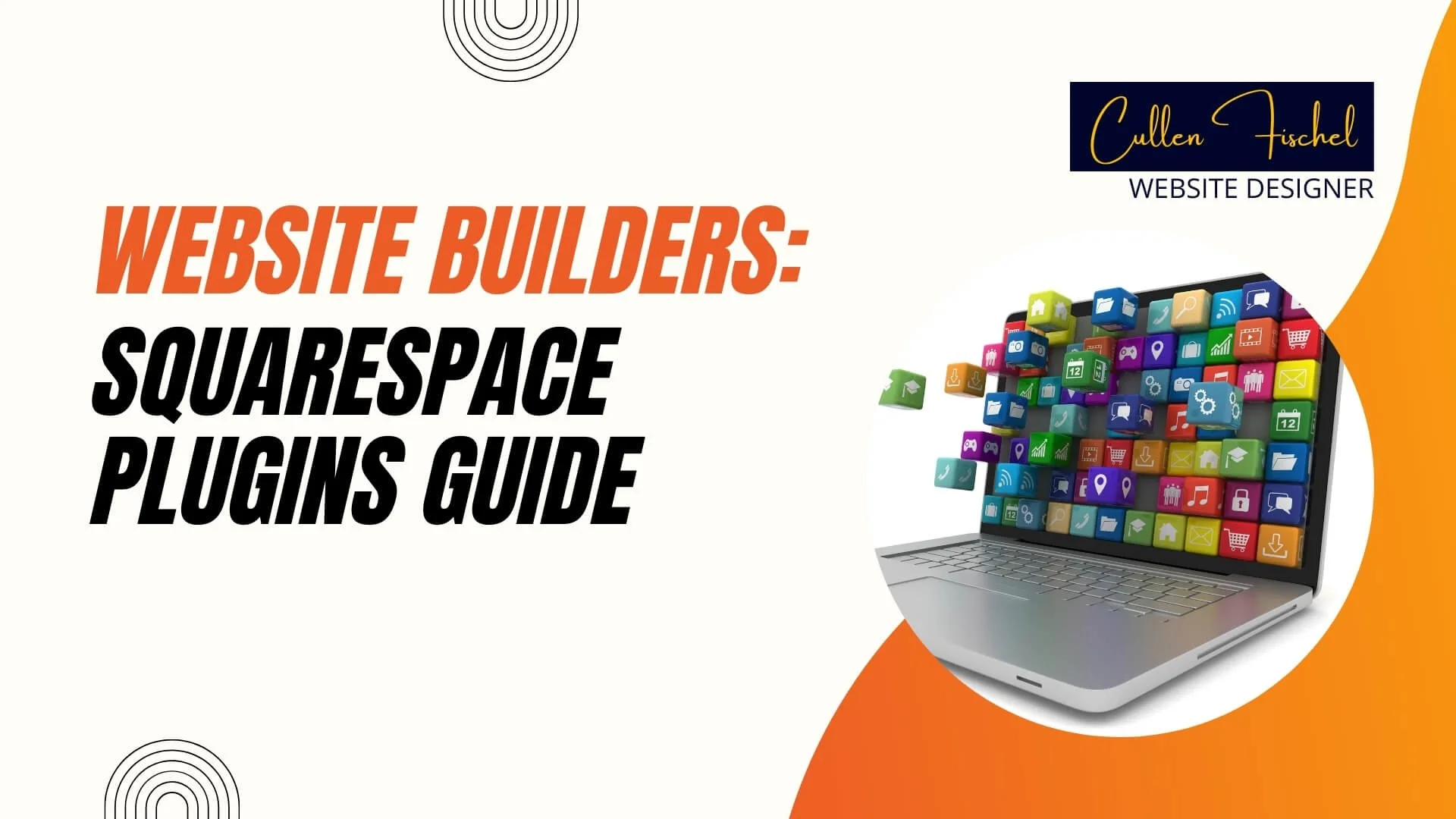The Future of Website Builders: Trends and Predictions for 2025 and Beyond
The Future of Website Builders: Trends and Predictions for 2025 and Beyond
Boost engagement with modern web design trends: bold fonts, dark mode, 3D elements, voice search optimization. Get pro advice.
Cullen Fischel | SEPTEMBER 13, 2024 | 5 min. read
5 minute read
By Cullen Fischel, Website Designer
Your company's website is an extension of your brand – the digital front door of your business.
It's a critical marketing tool, but how do you keep it engaging and impactful?
Let's dive into some exciting developments in website builders that will change the game for your online presence!
Key Takeaways
Website creation is becoming significantly easier, even if you don't have a lot of coding skills or design experience.
AI-powered tools will offer invaluable suggestions and automate many website design tasks.
Personalizing websites for each individual visitor will lead to better results.
User experience is king – your website needs to be fast, mobile-friendly, and accessible to everyone.
Embrace new trends like immersive elements and voice search compatibility to stand out from the competition.
Usability Reigns Supreme
Building a website used to require a lot of coding knowledge or hiring a web development team. Not anymore!
Today's website builders are designed for anyone to use. They're easy to understand, with features like drag-and-drop that let you add, move around, and remove elements on your website without any coding. You don't need to be a tech whiz to use a website builder.
They give you control over your website's design and layout, but in a way that's simple and won't overwhelm you. This means even people with no experience can create professional-looking websites that showcase their brand and message effectively.
And for web designers like myself, website builders can still be a helpful tool. For instance, a client might have a sudden idea for a new website feature or layout. With a website builder, I can quickly bring that idea to life, saving time and making sure the client loves the final product.
AI: Your New Design Assistant
Get ready for website builders that think alongside you! Artificial intelligence (AI) is transforming the design process.
Website builders can analyze:
Your business type,
The products or services you offer, and
Your target audience.
Based on this information, AI can suggest:
Layouts,
Images,
Colors,
Fonts, and
Even content that might work well for your website.
It's like having a super-efficient design assistant helping you every step of the way. Some platforms can even create entire layouts and sections of your website with just a few bits of information from you.
For example, if you tell the AI you run a yoga studio, it might recommend:
Calming color palettes,
Images of people practicing yoga, and
Content focused on the benefits of yoga for mind and body.
This can be a huge time-saver, especially for business owners who don't have a design background or a lot of time to spend on website development..
The Power of Personalization
Benefits of Website Personalization
Saying goodbye to one-size-fits-all websites is a big win for your company! Modern website builders let you adapt what visitors see based on their past behavior, interests, location, and other factors. This allows you to deliver a much more relevant and engaging experience.
Enhanced Customer Experience
Imagine someone has purchased a specific product from you in the past. With website personalization, you could automatically show them related products or complementary accessories they might be interested in. This increases the chances of a repeat purchase and boosts your average order value.
Geo-Targeted Content
Personalization can also be used to target visitors based on their geographic location. For example, if you run a local bakery, you could display promotions for your most popular seasonal treats on your website's homepage for visitors in your city. Someone browsing from another state might see a different message highlighting your nationwide shipping options.
By tailoring your website content to specific audiences, you can significantly improve conversion rates and grow your customer base..
Performance Still Matters
Don't Drive Customers Away with Frustrating Websites!
Think about it from your own user experience – have you ever gotten impatient waiting for a website to load, or struggled to navigate a site that wasn't optimized for your phone?
In today's fast-paced world, users expect websites to be lightning-quick and function flawlessly across all devices. Prioritize website builders that are known for their performance optimization features. This ensures your website loads quickly, images render correctly, and navigation is intuitive on any screen size.
Speed is just one piece of the performance puzzle. Mobile-friendliness is absolutely essential. More and more people are browsing the web from their smartphones and tablets, so your website must adapt accordingly. A responsive website design automatically adjusts its layout to fit the device being used, providing a seamless experience for all visitors.
Accessibility should also be a top consideration. Imagine potential customers who rely on screen readers or other assistive technologies being unable to navigate your website. By following accessibility best practices, you ensure your website is usable by everyone, which is not only the right thing to do but can also open up your business to a wider audience..
Design Trends to Watch in 2025
Here are some of the hottest trends driving modern web design:
Bold Typography: Large, eye-catching text elements are in, replacing subtle typefaces to convey a clear message about your brand. Experiment with expressive fonts and dynamic sizes to make a statement.
Dark Mode: A user option to switch to a dark interface provides visual comfort and a sense of sophistication. Many users find darker themes easier on the eyes, plus dark mode can help extend battery life on mobile devices.
Micro-Interactions: These small animations enhance the user experience, providing subtle satisfaction and feedback as the user navigates your site. Smooth transitions, playful hover effects, and delightful "success" animations all add up.
Immersive Elements: 3D elements and interactive experiences set websites apart, captivating users. From subtle 3D effects within graphics to full-on interactive product configurators, consider how to let users engage in a more tactile way.
The Rise of Voice Search: Prepare your site for voice-based queries, which is rapidly gaining popularity. Optimize for natural language and conversational keywords so search engines can easily understand and surface your content.
Cullen's Tips for Success
Thinking of building or revamping your website? Here are some key tips:
Choose a platform that aligns with your skill level and business needs. User-friendly platforms exist for beginners, while more complex sites might benefit from advanced content management systems or custom development.
Don't skimp on quality visuals. Invest in high-quality images and consider custom illustrations to elevate your brand aesthetic.
Make your website tell a story. Engage visitors with your brand's narrative, highlighting your mission, values, and what differentiates you.
Continual Optimization: Analyze user behavior to improve your website's design and functionality regularly. Track how users move through your site and refine for the best results.
Ask a Website Designer
How often should I update my website?
To maintain user engagement and boost search engine optimization (SEO), it's essential to regularly update your website content. A general guideline is to refresh your site with new content at least every quarter. This update can encompass various content types, including blog posts, product descriptions, case studies, and other pertinent information for your audience.
Besides adding fresh content, it's crucial to address any broken links or outdated information to uphold a positive user experience. In rapidly evolving industries, frequent updates may be necessary to stay competitive. By actively monitoring website analytics, you can pinpoint areas for enhancement and evaluate the impact of your content refresh approach on key performance indicators.
Are DIY website builders a good choice for complex websites?
DIY website builders are good for creating a simple site quickly and affordably. They have easy-to-use tools and pre-made templates. But they may not be flexible enough for complex needs. For specialized or advanced design, working with a professional like Cullen Fischel is recommended. Web designers can create a unique site, add advanced features, and improve search engine visibility. They also keep your site up-to-date with current trends.
What are some common web design mistakes to avoid?
Addressing these issues is crucial to enhancing a site's overall effectiveness:
Poor navigation: characterized by confusing menus and scattered links, can frustrate visitors and push them away from exploring further.
Slow loading times: a common culprit behind high bounce rates, demand immediate attention to retain user interest.
Lack of visual hierarchy: may leave users overwhelmed, unsure of where to focus their attention first.
Ignoring mobile optimization: jeopardizes the experience for the growing number of users accessing websites on smartphones and tablets.
Forgetting clear calls to action: undermines conversion goals, as users may leave without completing desired actions.



